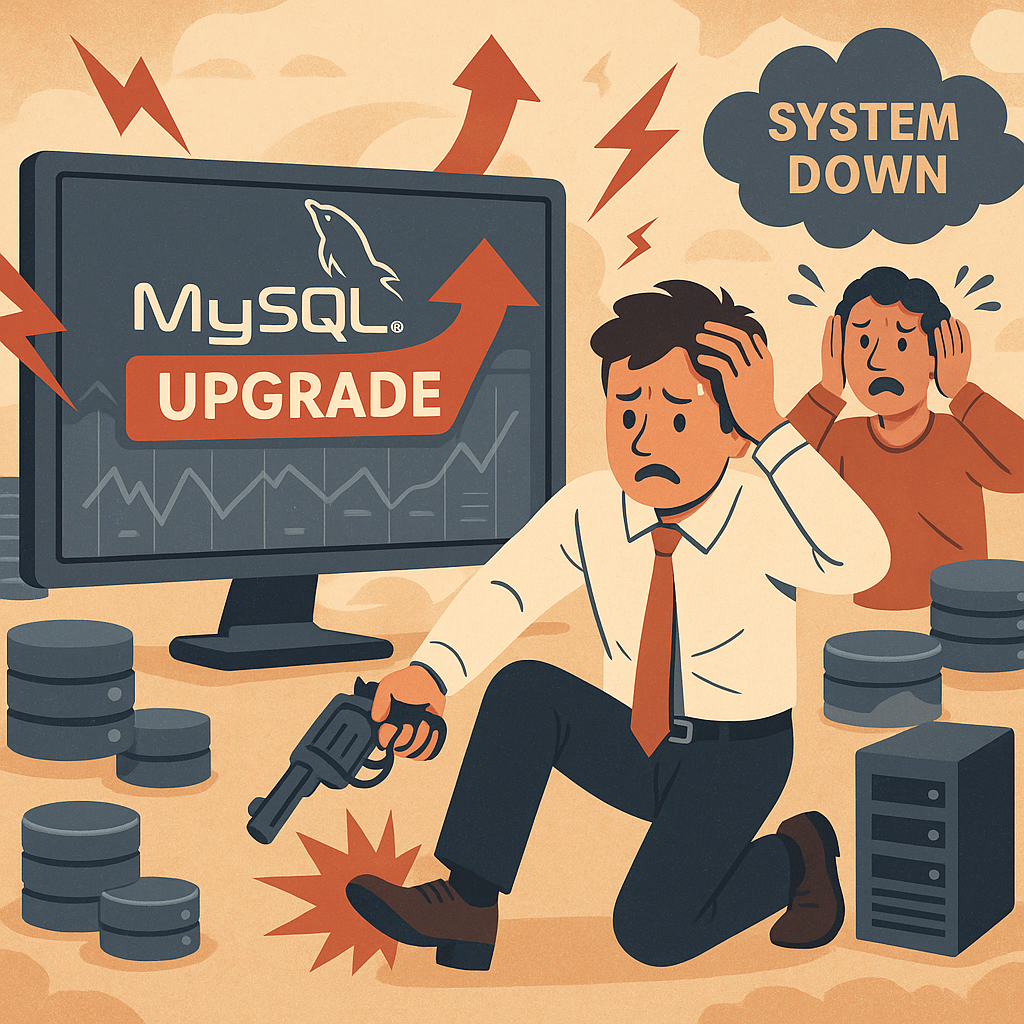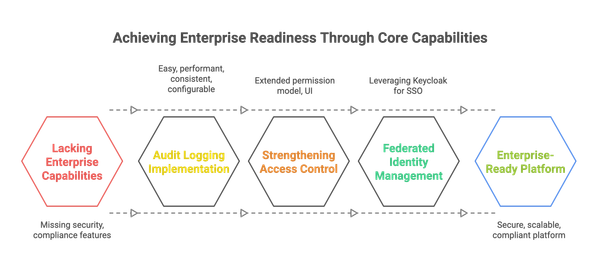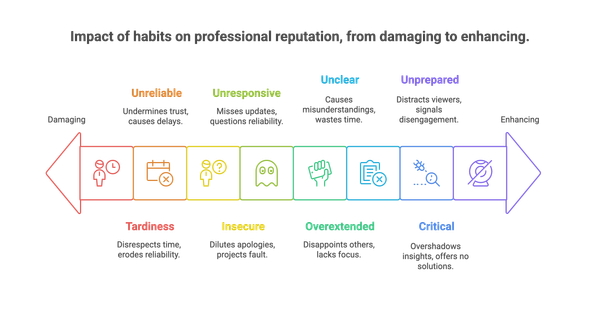When a MySQL Upgrade Nearly Took Us Down: Lessons from the Trenches

Introduction
In the world of software engineering, it's not uncommon to find ourselves in crisis-mode when something unexpected hits production. Behind every major incident is often a lesson waiting to be learned—sometimes painful, always valuable. This is the story of how a seemingly straightforward upgrade from MySQL 5.7 to MySQL 8 caused widespread system failure, disrupted customer experiences, strained internal teams, and ultimately led to the birth of a stronger engineering culture.
The Background
When I joined the engineering organization, one of the core backend teams had just rolled out a long-awaited infrastructure update: migrating from MySQL 5.7 to MySQL 8. This change was initiated primarily to stay compliant—5.7 was reaching End-of-Life, and continued use would expose the company to significant security risks and loss of vendor support. On paper, everything looked ready. QA had completed their validation. Developers had tested their modules. Stakeholders had signed off. The release was pushed to production.
But the storm was just beginning.
Within hours, customers started raising tickets. Within a day, complaints became an avalanche. Performance had tanked—pages were timing out, background jobs were stalled, and the overall user experience was severely degraded. This wasn’t just a performance dip. It was catastrophic. Systems became practically unusable in real-world scenarios. Customers began demanding explanations. Support channels were flooded. Tensions rose within engineering, and the spotlight turned sharply on leadership.
The Root Cause: The Disappearance of Query Cache
After diving into logs and monitoring dashboards, it became clear that the spike in query execution time was not due to a functional error in the application logic. I decided to trace the issue from the source. Reading through the MySQL 8 release notes, the problem came into focus. MySQL 8 had entirely removed the query cache—a feature our systems had unknowingly relied upon for years.
In MySQL 5.7, this cache served as a hidden performance multiplier for read-heavy workloads. With its removal, every previously cached query now hit the database directly. The result was massive strain on the database engine—CPU usage skyrocketed, memory consumption surged, and the overall throughput plummeted.
This change had indeed been documented. However, in a hurry to upgrade, the team had missed this critical line. No compatibility testing had been performed to simulate query behavior without the cache. The result was a full-blown performance meltdown in production.
No Turning Back: Compliance Closed the Door on Rollbacks
As much as everyone wanted to roll back to MySQL 5.7, compliance policies made that path impossible. The version had reached End-of-Life. Continuing to use it would pose not only technical risks but also audit failures, legal exposure, and even revocation of key certifications. The security team strongly opposed any rollback. Moreover, the DevOps team had already updated automation scripts and container configurations for MySQL 8, making a rollback a logistical nightmare.
We were locked in a one-way street and had no option but to fix the mess within the constraints of the new database version.
Organizational Failures and Gaps
This incident wasn’t just a technical problem. It revealed deep-rooted issues in our release processes. There was no formal process in place to benchmark performance before and after major upgrades. The QA team had focused purely on correctness—whether features were working as expected—not on how well the system performed. There were no performance alerts configured to warn us of deteriorating DB responsiveness. Everyone believed someone else had validated the upgrade holistically. That illusion of shared responsibility collapsed under the weight of customer frustration.
Assembling the Recovery Task Force
Given the severity of the crisis, we immediately formed two focused groups. These were not conventional project teams but rather high-agility, high-autonomy task forces composed of senior engineers, architects, and QA leads. The first group focused on optimizing queries. Their task was to comb through logs, profile the worst-performing SQL statements, add appropriate indexes, and rework inefficient joins. The second group began building a caching layer from scratch, experimenting with technologies like Redis and Memcached to offset the absence of the native query cache.
There was no luxury of time. Every passing hour meant lost productivity, irate customers, and mounting pressure on the support team. The coordination between these two teams had to be near perfect. We set up war-room calls twice a day. DevOps provided real-time metrics. QA designed quick, targeted test cases. Architecture defined caching policies that balanced freshness with performance.
Buying Time: The Temporary Fixes
To prevent the ship from sinking while the long-term fixes were underway, we implemented several stopgap measures. We quickly added more read replicas to the database cluster to distribute the load. Non-essential features that made heavy use of the database were temporarily disabled. Background jobs were throttled. These interventions didn’t solve the root cause, but they bought us time and reduced the immediate pain for end users.
Difficult Conversations with the Product Team
Shifting engineering efforts away from roadmap features toward stabilization work is never easy. The product managers were initially hesitant. Their quarterly goals were tied to shipping new functionality, not fixing regressions. We had to bring the reality to the table—customer sentiment, support ticket volumes, potential account churn, and the reputational risk of prolonged performance issues.
We presented clear evidence: dashboard snapshots showing the database on the verge of collapse, customer quotes expressing anger and frustration, and latency graphs with red zones across the board. Eventually, we gained consensus. All non-critical feature development was paused. Product and engineering leadership aligned on a shared goal: restore performance, no matter what it took.
Customer Communications: Owning the Narrative
While the engineering battle raged on internally, we had another front to manage—our customers. Silence in a crisis is often worse than the problem itself. Our customer success team worked around the clock, preparing templated but personalized updates, setting expectations, and offering service credits where appropriate. We created a status page with real-time updates and set up direct Slack channels for some of our largest clients.
Honest and proactive communication kept us from losing customer trust entirely. Many appreciated the transparency, even if the situation itself was frustrating.
Delivering the Long-Term Fix
After several intense weeks, our efforts started paying off. The query optimization team had reworked dozens of queries. Some were restructured for better performance. Others were split into smaller units or batched for efficiency. Missing indexes were added thoughtfully, avoiding unnecessary bloat.
In parallel, the caching team had built and tested a robust caching mechanism using Redis. We adopted a read-through strategy with TTLs and fallback logic. This layer dramatically reduced the load on the primary database. The architecture ensured data consistency while allowing cache invalidation without complexity.
Validating the Fixes
Once the new solutions were deployed, we didn’t rest. We executed synthetic load tests simulating peak traffic patterns. The results were encouraging. Database CPU usage dropped by nearly 70%. Page load times were back within acceptable ranges. Error rates reduced to near-zero. A detailed regression suite confirmed that functionality remained intact.
Observability was a key part of our validation process. Dashboards were reviewed daily. Anomalies were investigated immediately. We were building not just a fix but resilience.
Corrective and Preventive Actions
No incident is truly resolved until the root causes are addressed systematically. We formalized the learnings into a Corrective and Preventive Action (CA/PA) framework. Corrective actions included cleaning up deprecated code paths, improving error handling in database layers, and conducting knowledge-sharing sessions across teams.
Preventive actions went deeper. We introduced mandatory release note reviews for all major upgrades. QA processes were updated to include load testing and performance regression baselines. An internal wiki was created documenting lessons learned. Critical production changes now require sign-off from senior engineering leadership. Shadow environments were introduced to simulate upgrades under realistic conditions.
Lessons Learned
This experience underscored several key principles. Upgrades are not routine maintenance tasks. They are fundamental transformations that must be treated with the same rigor as new product development. Backward compatibility should never be assumed. Functional correctness is not the same as production readiness. And most importantly, engineering must operate with a sense of shared ownership and accountability.
We also learned the value of institutional humility. No matter how seasoned or experienced a team is, oversights happen. What matters is how we respond, learn, and evolve.
Final Thoughts
This incident tested our systems, our culture, and our patience. But it also brought out the best in our teams. We collaborated better. We communicated more honestly. We documented more rigorously. Today, our upgrade processes are safer, our monitoring is sharper, and our engineering culture is stronger.
Every major upgrade now starts with the same ritual—a team huddle, a review of the release notes, and the hard question: “What could go wrong?”
It’s a simple practice, born from chaos, that continues to keep us grounded.
Stay diligent. Stay humble. And always, always read the release notes.



